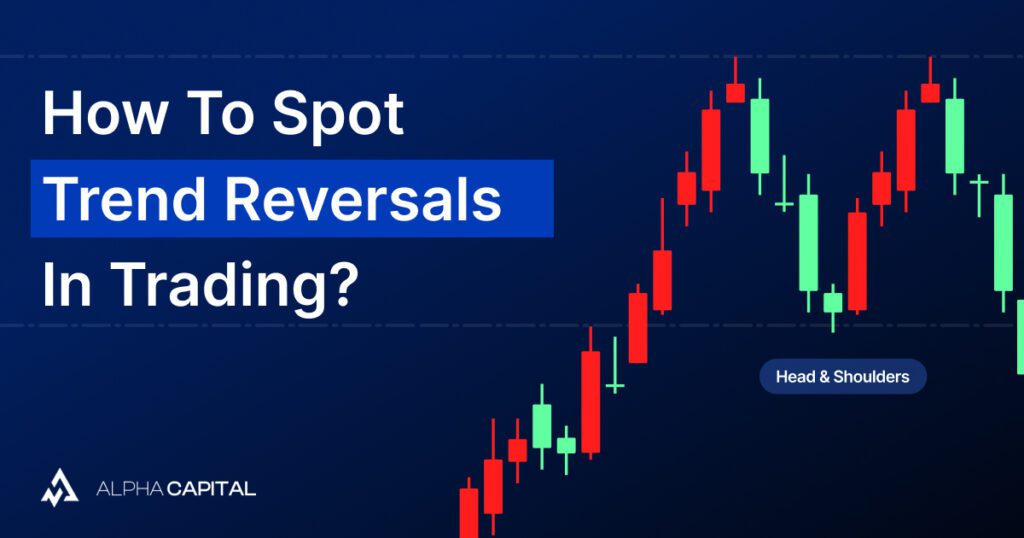
In the fast-paced world of day trading, staying informed and inspired is crucial for success. Podcasts offer a convenient way…

Identifying trend reversals in financial markets is a crucial skill for traders and investors. Recognizing when a trend is losing momentum can present opportunities for profitable trades or help avoid potential losses. Here are some common methods and indicators, supported by statistics, to help you spot potential trend reversals.
Head and Shoulders
The head and shoulders pattern is a classic reversal signal. It consists of three peaks: a higher high (the head) flanked by two lower highs (the shoulders). According to Thomas Bulkowski’s “Encyclopedia of Chart Patterns,” the head and shoulders pattern has a success rate of approximately 83% in predicting trend reversals when confirmed by a break of the neckline
.
Double Top and Double Bottom
These patterns occur when the price tests a resistance level twice (double top) or a support level twice (double bottom) without breaking through. Bulkowski’s research indicates that double tops and bottoms have a success rate of about 65% in signaling reversals
.
Triple Top and Triple Bottom
Similar to double tops and bottoms, triple tops and bottoms involve three tests at a particular level, suggesting even stronger reversal signals.
.
Moving averages are useful for spotting changes in trend direction. A simple strategy is to observe the crossover of shorter-term moving averages (e.g., 50-day) with longer-term ones (e.g., 200-day). Historical data from various market studies shows that the “Golden Cross” (bullish crossover) and “Death Cross” (bearish crossover) can be effective indicators, with success rates varying based on market conditions but often exceeding 60%
.
The RSI is a momentum oscillator that measures the speed and change of price movements. When RSI reaches overbought (above 70) or oversold (below 30) levels and then reverses, it can indicate a potential trend reversal.
.
Divergence occurs when price movement and an indicator (like RSI or MACD) move in opposite directions. Bullish divergence happens when the price makes lower lows, but the indicator makes higher lows. Bearish divergence is the opposite.
.
Certain candlestick patterns, such as engulfing patterns, doji, and hammers, can signal reversals, especially when they appear near support or resistance levels. Research by Steve Nison, a pioneer in candlestick charting, indicates that these patterns can have success rates ranging from 50% to 70%, depending on the market context and confirmation by other signals
.
An increase in trading volume during a price reversal can confirm the strength of the new trend. A substantial volume increase during a reversal may indicate a valid trend change, with studies showing that volume spikes can enhance the reliability of reversal signals by up to 20%
.
Drawing trendlines connecting the lows or highs in an existing trend can help identify reversals. A break of these trendlines can be a sign of a trend reversal.
.
Economic and corporate news can significantly impact the asset you’re trading. Unexpected events or changes in fundamentals can trigger trend reversals. While harder to quantify, the impact of fundamental analysis is crucial, often serving as a catalyst for technical signals
.
Combining multiple technical indicators and analysis methods can help confirm trend reversals. Ensure that different indicators support the same conclusion for a more reliable signal.
.
Always set stop-loss orders to limit potential losses if the trade doesn’t go as expected. This is crucial in volatile markets where reversals can be sudden and unpredictable.
Conclusion
No single indicator or method is foolproof, and false signals can occur. It’s essential to conduct thorough analysis and use risk management strategies to mitigate potential losses. By understanding and applying these techniques, traders can better navigate the complexities of market trends and capitalize on reversal opportunities.

In the fast-paced world of day trading, staying informed and inspired is crucial for success. Podcasts offer a convenient way…

Embarking on a trading journey can be both exciting and daunting. With a myriad of trading styles and strategies available,…

Gold has long been a favorite among day traders, offering a unique blend of volatility, liquidity, and market dynamics that…

Identifying trend reversals in financial markets is a crucial skill for traders and investors. Recognizing when a trend is losing…

Home About Blog Contact